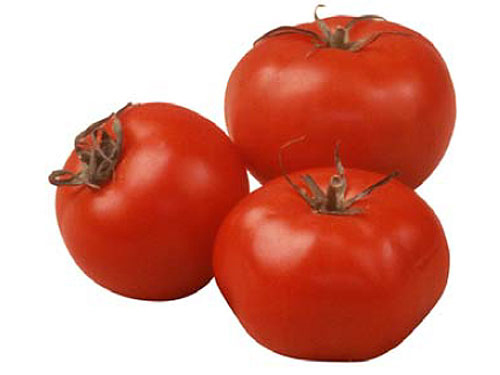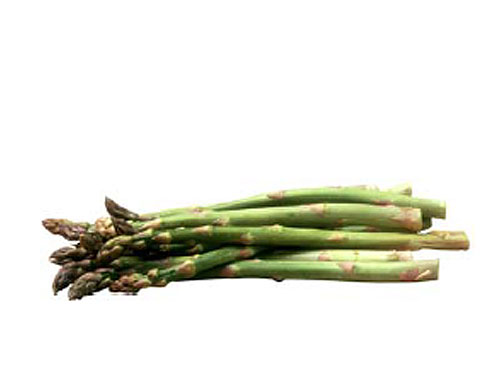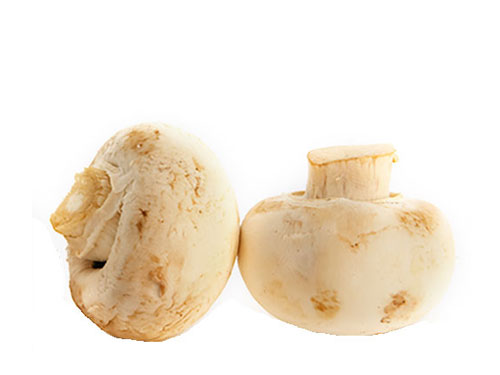
Fact Sheet FS626
Essential Elements
The optimum growth and production of vegetables requires an adequate supply and balance of nutrients. Plant tissues are composed largely of carbon, hydrogen, and oxygen which are obtained from air and water. A fertile garden soil must supply an additional fourteen essential elements which may be separated into two groups as follows:
The micronutrients are taken up by plants from the soil in relatively small amounts compared to the macronutrients.
Soils vary considerably in ability to supply essential nutrients for plant growth. To be able to use fertilizers and lime intelligently, a soil test is strongly advised. A soil test indicates the degree of acidity or alkalinity (pH) of a soil and which nutrients are present in adequate supply and which are deficient. Application of fertilizers and soil amendments without this information can harm plants and may be wasteful and a hazard to the environment.
A soil test is especially important when establishing a vegetable garden in a new location. Once the soil test levels are known, a new soil test should be conducted every three years to follow changes in soil conditions.
Taking A Soil Sample
A soil testing service is provided to New Jersey residents by the County Cooperative Extension offices throughout the state for a nominal charge. This service provides soil test results and recommendations for many growers throughout New Jersey annually.
Ideally, the best time to take a soil sample is after harvest in the fall or before spring fertilization. Do not sample shortly after a lime, fertilizer, or manure application or when the soil is excessively wet.
Taking a good soil sample is the most important step in soil testing. The soil test can only provide useful information when the sample accurately represents the fertility in your garden soil. Sample the top 6 inches of soil while walking in a random pattern across the garden. Collect 15 cores of soil in a clean plastic bucket using a garden trowel or a spade. Break-up the clumps and thoroughly mix the soil. Place about a half pound subsample into the soil test kit. Follow the instructions that come with the soil test kit.
Lime
Application of lime to achieve a favorable soil pH enhances the availability of essential plant nutrients, supplies Ca and Mg for plant use, reduces the toxicity of substances in soil that restrict root growth, improves soil structure, and enhances the growth of beneficial soil microorganisms. A slightly acid soil, with a pH near 6.5, is optimum for growing most vegetables. A soil pH of 5.5 is recommended for growing potato varieties that are susceptible to scab. Soils with different textures, but the same initial pH value, usually require different rates of lime application. For example, a sandy loam soil with a pH of 5.5 may need 50 lbs. of lime per 1000 sq. ft., whereas a silt loam soil may need 100 lbs. of lime. The recommended rate of lime should maintain the soil pH within the desired range for 2-3 years on sandy soils and 3-4 years on finer textured soils. Broadcast the lime over the surface and incorporate 4-6 inches into the soil. Soils that test low in magnesium should utilize dolomitic lime which has a higher magnesium content than calcitic lime. Over application of lime can decrease the availability of soil nutrients. Deficiencies of iron, manganese and zinc in vegetable plants is often due to over liming and an excessively high soil pH.
Macronutrients
Fertilizer can be purchased as single nutrient fertilizers or combination fertilizers. The numbers on the fertilizer bag represent a grade of fertilizer or percentage of nitrogen (N), phosphate (P2O5), and potash (K2O). Thus, 5-10-10 fertilizer is in a 1-2-2 ratio. An 8-16-16 fertilizer is also a 1-2-2 ratio, but it contains a greater percentage of each of the fertilizer elements. Smaller amounts of the 8-16-16 fertilizer would be required in place of the 5-10-10.
Single nutrient fertilizers such as ammonium nitrate (33% N), urea (45% N), triple superphosphate (46% P2O5), muriate of potash (60% K2O), or sulfate of potash (50% K2O) may also be used to obtain the desired amounts of nitrogen, phosphorus, or potassium. Sulfate of potash, which is 17% S can be used when it is desirable to also supply sulfur.
To calculate the amount of a combination or single nutrient fertilizer required to obtain a given amount of a particular nutrient, divide the pounds of nutrient desired per unit area by the grade percentage. See example below.
Example:
| 1 (lbs. of N desired/1000 sq. ft.) 5 (% N in 5-10-10) |
= |
| (1.0) (0.05) |
= | 20 lbs. of material |
| Material | Analysis | Rate of Nutrient Release | ||
|---|---|---|---|---|
| N | P2O5 | K2O | ||
| Blood Meal | 12-15 | 1 | 1 | Medium-Rapid |
| Bone Meal | 1 | 15 | 0 | Medium |
| Cotton Seed Meal | 7 | 3 | 2 | Slow-Medium |
| Dried Cow Manure | 2 | 3 | 3 | Slow Medium |
| Composted Cow Manure | 1 | 1 | 1 | Slow |
| Soybean Meal | 7 | 1.5 | 2 | Slow-Medium |
| Dried Grass Clippings | 2 | 1 | 2 | Medium |
| Bat Guano | 10 | 4 | 2 | Medium-Rapid |
Therefore, 20 lbs. of 5-10-10 will supply 1.0 lbs. of N, 2.0 lbs. of P2O5 and 2.0 lbs. of K2O.
The soil test results provide the basis for determining the amounts of phosphorus and potassium that should be applied. If for example, the soil test phosphorus level is found to be high or very high, a lower rate of phosphorus application may be recommended. A fertilizer grade suitable for this purpose would have a low value for phosphorus relative to nitrogen content.
Natural organic fertilizers depend on soil microbial activity or weathering to release nutrients. The nutrient release occurs slowly over a period of time. The amount of material to apply can be calculated according to the above example based on its nutrient content shown in Table 1. The nutrient content of organic materials and their rate of nutrient release are quite variable. Organic amendments and compost are also good soil conditioners that act to improve the physical and biological properties of soil. A common misconception with use of organic fertilizers is that they pose no risk to the environment. Organic fertilizers are safe if used properly, but overapplication can pollute water supplies just as overapplication of inorganic fertilizers.
Sulfur generally does not need to be supplied for growing vegetables in New Jersey. Fine textured soils and soils well supplied with organic matter have ample sulfur. Very sandy soils low in organic matter content may in some instances benefit from application of sulfur. Sulfur may be supplied by using sulfate of potash, ammonium sulfate or application of composts or manures.
All the suggested fertilizer for spring application should be spread uniformly and thoroughly mixed to a depth of 4-6 inches before seeding or transplanting.
| Vegetable | Application Schedule lbs. Nitrogen per 1000 sq. ft. |
Ammonium Nitrate 33-0-0 |
Ammonium Sulfate 22-0-0 |
Urea 46-0-0 |
Blood Meal 14-1-1 |
|---|---|---|---|---|---|
| lbs. of fertilizer per 1000 sq. ft. | |||||
| Tomatoes | 1.0 lbs at first bloom followed 4 weeks later with another 1.0 lbs. | 3.0 | 4.5 | 2.2 | 7.0 |
| Potatoes | 1.5 lbs. at 4 weeks after emergence | 4.5 | 6.5 | 3.3 | 10.0 |
| Sweet Corn | 2.0 lbs. when plants are 12 inches tall | 6.0 | 8.7 | 4.4 | 14.0 |
| Cabbage | 1.0 lbs. at 4 weeks after transplant | 3.0 | 4.5 | 2.2 | 7.0 |
| Squash | 1.0 lbs. at 4 weeks after emergence | 3.0 | 4.5 | 2.2 | 7.0 |
| Peppers | 1.0 lbs. at 4 weeks after emergence | 3.0 | 4.5 | 2.2 | 7.0 |
| Beans | 0.5 lbs. at 4 weeks after emergence | 1.5 | 2.2 | 1.0 | 3.5 |
Sidedressing Nitrogen
Certain vegetable crops require additional nitrogen during the growing season. The extra nitrogen should be sidedressed (application of fertilizer along side of each row of plants) at the rates and times specified in Table 2. Irrigation following application will enhance movement of fertilizer into the root zone.
Micronutrients
Micronutrients seldom need to be applied to home vegetable gardens. Micronutrients are contained in native soil minerals and are generally available in sufficient amounts in New Jersey soils that have been limed to pH 6.0-6.5. Application of compost, manures, or other organic amendments adds small quantities of micronutrients and the added organic matter further enhances nutrient availability.
Chlorine is contained in appreciable amounts in most fertilizer mixtures. When the soil pH is too high, iron or manganese deficiencies are likely to occur. Deficiencies of copper, molybdenum, and zinc are rare in New Jersey. Boron deficiency is occasionally observed in cole crops. Typical deficiency symptoms for some essential nutrients are described in Table 3.
| Nitrogen | Stunted growth, small pale yellow leaves. Plant may be a light green. Older leaves affected first. |
| Phosphorus | Red or purplish color on leaves, especially on undersides. Often a problem in cool soils in early spring. |
| Potassium | Bronzing and dying of leaf margin. Some spotting between veins. Chlorotic with brown spots throughout leaf. |
| Calcium | Newest leaves hooked, die back at the terminal bud. New leaves are yellow while older leaves are dark green. Causes Blossom End Rot in tomato. |
| Magnesium | Mottled yellowing between veins of older leaves while veins remain green. Yellow areas may turn brown and die. |
| Sulfur | Plant as a whole is affected, with plants becoming light green in color. |
| Iron | Yellow or white areas on youngest leaves. Veins typically green. |
| Boron | Youngest leaves become light green and may become distorted. Terminal bud may eventually die. Causes blackheart of beet. |
| Molybdenum | Narrow leaves with interveinal yellowing on older leaves. New leaves green at first, becoming mottled as they expand. |
| Manganese | Yellow to white colored leaves but with green veins. |
| Zinc | Spotting of older leaves, usually in between veins. Reddish brown spots on bean cotyledons. Seldom a problem in New Jersey. |
| Copper | Young leaves may be permanently wilted without any yellowing. Seldom a problem in New Jersey. |
August 2003
Copyright © 2024 Rutgers, The State University of New Jersey. All rights reserved.
For more information: njaes.rutgers.edu.
Cooperating Agencies: Rutgers, The State University of New Jersey, U.S. Department of Agriculture, and Boards of County Commissioners. Rutgers Cooperative Extension, a unit of the Rutgers New Jersey Agricultural Experiment Station, is an equal opportunity program provider and employer.



